Staff Book Reviews by Genre: Real Life
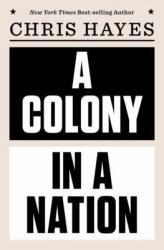
Chris Hayes, a journalist on MSNBC, wrote this book after his experience reporting in Ferguson, Missouri after the killing of Michael Brown by a police officer in 2014. In the book, he posits that we treat people of color in this country the same way that King George treated the colonists in the lead-up to the Revolutionary War: by enacting a police state that exploits the few for some sort of economic gain. We exist as two entities in this country: the Nation, which is concerned with upholding the law, and the Colony, in which we're more concerned with creating order.
This was a quick, excellent read. I'm usually not a fan of using personal anecdotes to make a point, but Hayes does that effectively here: most noticeably because he then will follow an anecdote with data to back up whatever it is he's saying. The anecdotes, though, make the book particularly interesting, especially because they are often presented as a "what if" thought experiment as to how Hayes' experience might have been different had he been a person of color. Part history lesson, part social justice treatise, A Colony in a Nation is a book that's not to be missed, particularly by those that are concerned with issues within the criminal justice system, and the egregious civil and human rights violations that are enacted upon citizens of color in the United States. 5 stars.
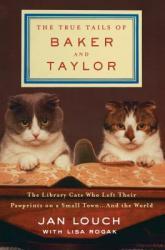
Do you love libraries? Who doesn't? So everyone should love this book. Baker and Taylor are two Scottish Fold cats adopted by a small library in Nevada. This library has a mouse problem so Jan Louch, Assistant Librarian, researches good cat breeds for libraries. First Baker is adopted and the fun is doubled when Baker's nephew, Taylor, is added to the staff. Patrons, staff and even a fan club comprised of a 4th grade class add to these heartwarming tales. Adorable pictures complete the delightful mix.
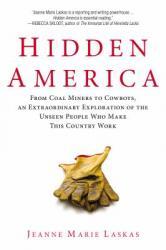
I really enjoyed this book! I'm not much of a nonfiction reader, but Jeanne Marie Laskas kept me interested in all of the stories of Hidden America. I learned so much. I have to admit, I never really think about how my fresh fruit gets to me, but after reading the chapter on migrant workers, I am not sure I will look at my daily apple the same way. Also, I thought she did a great job when she went to Yuma, Arizona to the gun shop. That story didn't turn out like I expected it to. But the best chapter is about our trash and the people who tend to it. I just thought a landfill was a place where our garbage went to never be seen again. But there is a lot that goes into landfills and garbage. This was such a fascinating book! A great read and a really good book for a book group. So much to discuss!

John Krakauer, author of Under the Banner of Heaven, Into the Wild, and Into Thin Air, brings his literary non-fiction style to addressing the topic of rape and sexual assault at the University of Montana, which is located in the titular city, Missoula. Krakauer examines the assaults of five young women with ties to this university during the period of 2008-2012. These case studies examine the culture of sexual assault and how these cases are dealt with by the criminal justice system and the university. Readers should be warned that this book does have some graphic content due to the nature of this topic.
Readers of Krakauer who enjoyed Under the Banner of Heaven will find a similar style of reporting found in this work. Krakauer champions the stories of the five women whose assaults he details as he works to debunk many of the myths surrounding the topic. Most interesting to this reviewer is the research that he presents that not many men commit sexual assault, but those that do tend to be repeat offenders. And many of these perpetrators fail to even realize that their actions are criminal.
Krakauer thoroughly takes to task members of the criminal justice system who oversee the charging and prosecution of these crimes. Other reviewers have found his treatment of those officials to be harsh and one-sided, claiming this to be a departure from Krakauer’s normally unbiased reporting style. This reviewer found that the critical lens Krakauer uses when discussing the many missteps of the criminal justice system to be warranted. He also is critical of the football culture of the area that strives to protect its athletes even if they have harmed others. We see how university officials try to navigate bringing offenders to justice in this type of culture. This book is really more about the culture of sexual assault than it is about Missoula. While it is an emotionally challenging read, it is a worthwhile read and it will hopefully bring more attention to sexual assault and ways that we as a society can prevent these crimes.
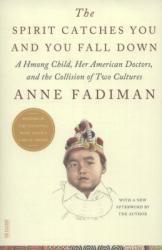
An insightful look at intercultural conflicts in the medical field. This book follows the case of a young Hmong girl named Lia Lee, the daughter of refugees, who presented with epilepsy in her infancy. The author, Anne Fadiman, follows both the parents and the doctors involved in the case, interviewing the key parties and untangling the miscommunication that led to Lia’s eventual brain death. The author is respectful to both sides and manages to explore the conflict that arises over the medical care without placing blame, instead asking what both sides viewed as good medicine, what they hoped to accomplish, and why they were unable to communicate their ideas to one another and agree on how to handle Lia’s treatment. The edition I read also had a helpful afterword in which the author updated readers on where the people she interviewed are now, some 20 years later, and how the hospital in Merced (and other hospitals throughout the country) are starting to change how they train their staff to interact with a multicultural community that might have very different ideas about what good medical care looks like. This book always makes top non-fiction lists, and now that I’ve finally gotten around to reading it I can say that for me it lived up to the hype.
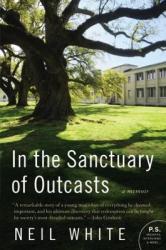
I admit, I didn't know much about leprosy before reading this book. I didn't realize that patients were segregated from society. I thought the disease had been eradicated decades ago! I was impressed with how Neil White told the story of the patients at Carville. Unlike the prisoners housed there, they didn't feel sorry for themselves. They just went on with their lives despite their disease. There was no reason to feel sorry for them.
What I didn't like about the book was Neil White's personal story. I do feel he was remorseful for taking money from innocent people to pay for his big dream of being a magazine publisher and living large. I just didn't like the examples he used when he was trying to express regret like when the first black family moved into his neighborhood or how he blackballed fellow students from joining his fraternity. The worse example was when White discussed how the patients had been disfigured by the disease and how he could "relate" because of the scar on his forehead. That passage really bothered me.